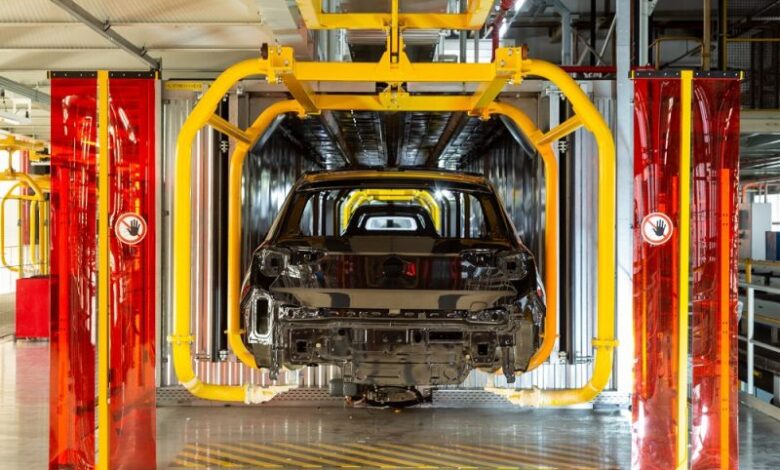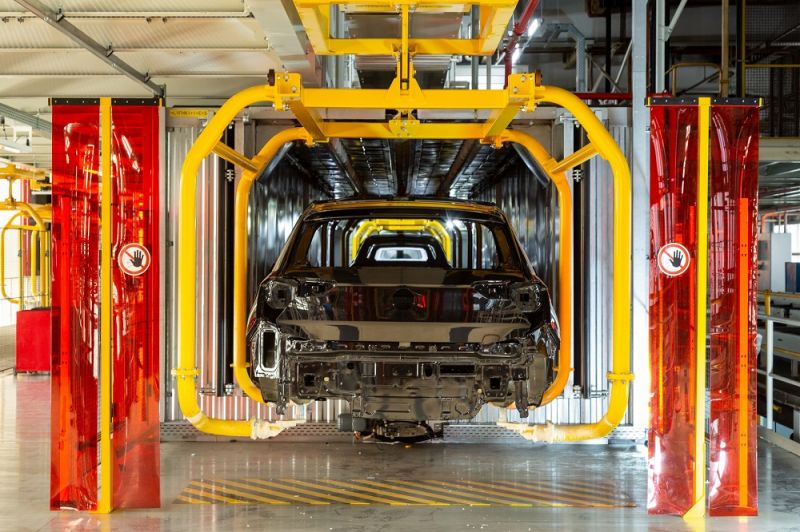New R235-million Wax Flooding Facility Begins Operating At Volkswagen South Africa Plant In Kariega

New R235-million Wax Flooding Facility Begins Operating At Volkswagen South Africa Plant In Kariega. Throughout two and a half years of a worldwide pandemic and varying levels of lockdowns and travel restrictions, a project team across four countries collaborated to establish a new production facility at the Volkswagen Group South Africa (VWSA) plant in Kariega.

This R235-million project came to fruition recently when the ultra-modern wax flooding facility began operating here – simultaneously improving the efficiency and environmental impact of the wax flooding process for locally-built Volkswagen Polos and Polo Vivos.
The wax flooding process, which serves to protect Volkswagen vehicles from corrosion in the cavities of the vehicle body, is now performed in a building covering 5 350m² across four levels, in the plant’s former electro-coating facility. This same process is what enables Volkswagen to sell vehicles with a 12-year anti-corrosion warranty. To establish this facility, colleagues across the Volkswagen Group in South Africa, Germany, Croatia and Czech Republic worked remotely from January 2020 to conceptualise the project, often using 3D laser scans, models and virtual navigation in the design phase. The international suppliers working on the project first visited the Kariega plant in July 2021, when the manufacturing of components for the facility had already begun.
A year later, the facility is operating across three shifts and the plant’s daily production volume of 680 vehicles per day – though it is capable of meeting the demands of the plant’s full installed capacity of 710 vehicles per day. In fact, at its full capacity the wax flooding facility will be able to process 747 vehicles per day. The process of wax flooding follows after the body of a vehicle has been painted, as certain cavities in the body are inaccessible during the painting process. First the vehicle body is put on a hanger and heated to 60 degrees Celsius in a pre-heating oven, to prevent the wax from solidifying too quickly when it is injected. Next, the body is lowered onto a wax flooding frame where wax (heated to 110 degrees) is injected and flooded into the cavities. Finally, the vehicle is tipped at a 15-degree angle to allow excess wax to run off for re-use. The wax used for the process is shipped from Germany in the form of tablets weighing 4,26 kilograms, which are melted down on site.
Using this new facility has not only allowed the VWSA plant to increase the volume of vehicles moving through the wax facility, but also the environmental impact of the process. The new facility uses 25% less energy for heating, and – as it uses liquefied petroleum gas (LPG) – has reduced CO₂ emissions for the process by 55%. “This investment from the Volkswagen Group is a massive vote of confidence in VWSA as a production plant,” said Ulrich Schwabe, Production Director at VWSA. “The modern facility will allow us to keep building and delivering high-quality Polos and Polo Vivos for local and export customers, while prioritising our commitment to continuously finding more environmentally responsible ways to do so.”


